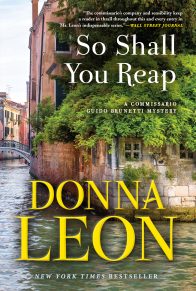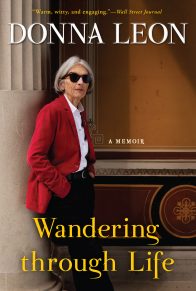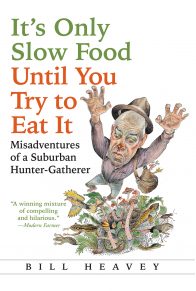One of the most common subjects of lamentation in Venice—or just about anywhere, I suppose—is the refusal of the present to be as good as the past. Here, this failure is evident in many ways: too many tourists, too few Venetians, unaffordable rents, unresponsive politicians. These changes have followed upon more profound transformations in the purpose and function of the city. In recent times, Venice, like most cities, provided life and livelihood for its citizens, sometimes to as many as 150,000 of them. Today, instead, its primary purpose is to offer services to tourists—twenty million last year—and this in turn provides an increasingly precarious future to the remaining 50,000 Venetians.
One way to feel the truth of this in the pit of your stomach is to take a walk down Strada Nuova, the commercial centre of the Sestiere di Cannaregio, as solid and middle-class a section of the city as one could ever hope to find. Here the shops reveal what this change in purpose has done to the fabric of the city.
I started buying food in these shops decades ago, when I first came to Venice as a tourist and then, as years passed, as a guest of the family of my friend Roberta, and then as a guest of her and her husband Franco. When I moved to Cannaregio in 1981, I continued to shop in the places where they shopped. The stores on Strada Nuova were numerous and provided just about any food a person could need, and they were closer to my home than the Rialto Market, visible on the other side of the Grand Canal.
More than twenty-five years later, Strada Nuova has changed in both appearance and function, and where we used to buy stracchino of the best quality, fresh pasta, or new cooking pots, there are now shops selling glass, glass, or—yes—glass. Let me take you by the hand and, like one of the perpetually lamenting women of the city, walk you along Strada Nuova and show you what tourism has done to us.
There on the right, just beyond Campo Santi Apostoli, there remains, thank heaven, Bisiol, selling chicken and meat for half a century, the majestic owner still sitting behind her cash register on the left. Not very far along was once Plip, the cheese shop, with that tall man who always wore his white hat while serving customers. People raved about his stracchino, and I remember eating it draped over polenta or using a crust of bread to scrape the last, almost-liquid bits of it from the wrapping paper so as not to let something so divine go to waste. He also had that wonderful Montasio his friend in the mountains produced, and who has found Montasio as good as that since he closed? He’s gone now, replaced by an estate agency. My notary told me that, last year, 25 per cent of the house sales he handled involved foreigners who did not plan to live permanently in the city.
A bit farther along was the barber, but now they sell masks there. Up near Calle delle Vele, the latteria is gone, but since it was bought by Benevento to expand the store that sells sweaters and cloth, it has at least continued to sell things useful to residents. Continue past the opening of the calle and you’ll see that Bellinato, the hardware store that served all of Cannaregio and where you could find anything, is gone, replaced by McDonald’s. The butcher has also vanished but you can buy a cheap glass necklace there, and the store beside it that sold kitchen pots is now Benetton.
Then there is Campiello Testori, once the site of the trattoria with the enormous grapevine at the front. Families went there on hot summer nights, taking along their own dinners. Perhaps they’d order a half-litre of wine, buy gassata as a treat for the kids, and spend the evening talking to friends at the other tables. Now it’s an Irish pub with loud music or soccer games on the giant television. The grapevine’s gone; so are the kids. So too is the open-air fish stall that stood in the same campiello. The calli leading back towards the laguna from it were once filled with shops offering life-giving food: a salumaio, the pasticceria, the butcher, two fruit vendors. Most are boarded up now, though the former butcher shop now sells woven articles from the Middle East.
Continuing towards the bridge, you’ll see that the florist is gone, replaced—after a brief period when it was a room full of public telephones—by masks, and the other fruit dealer is now a soap store whose acid fumes contaminate the entire area.
Turn around at the Ponte di S. Felice and head back towards Santi Apostoli, and you’ll see that Borini, which had a broad selection of good wines and liquori, now sells inexpensive clothing for adolescent women of all ages. Cross Calle Cà d’Oro: the Colussi shop that sold biscuits has been replaced by sporty clothing.
The other fresh fish stall at the front of Campo Santa Sofia is gone; so’s the post office, which is now part of the luxury hotel that stretches all the way back to the Grand Canal, with another hotel just across the campo.
The shop that once sold fresh pasta now sells glass, and so do the two beside it. The Brasilia bar remains and so does the restaurant, though it once had a brief period of being Chinese. The florist is no more and the fruit dealer at the foot of the bridge now sells cheap plastic toys. And then you’re back at the church.
Certainly, it is still possible to buy food along this part of Strada Nuova: no one starves to death in Venice. But when you come out of Il Fornaio with your fresh-baked bread, you are greeted by the smell coming from McDonald’s.
Luckily, though, not far off is still the traghetto which, for half a Euro, will take you across to the Rialto Market, one of the abiding glories of the city, where the past remains and the all-encircling splendour of food seems without end.














